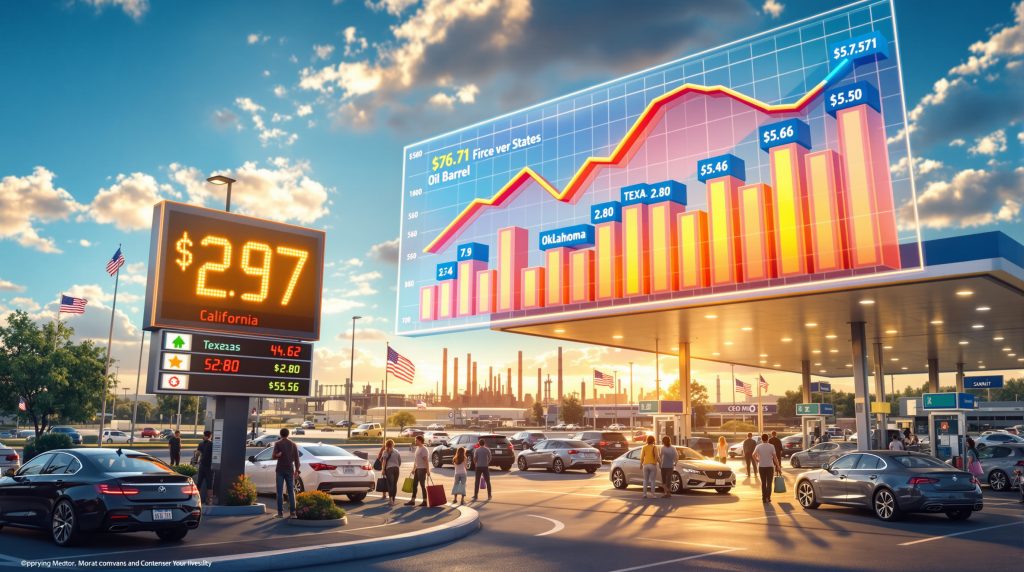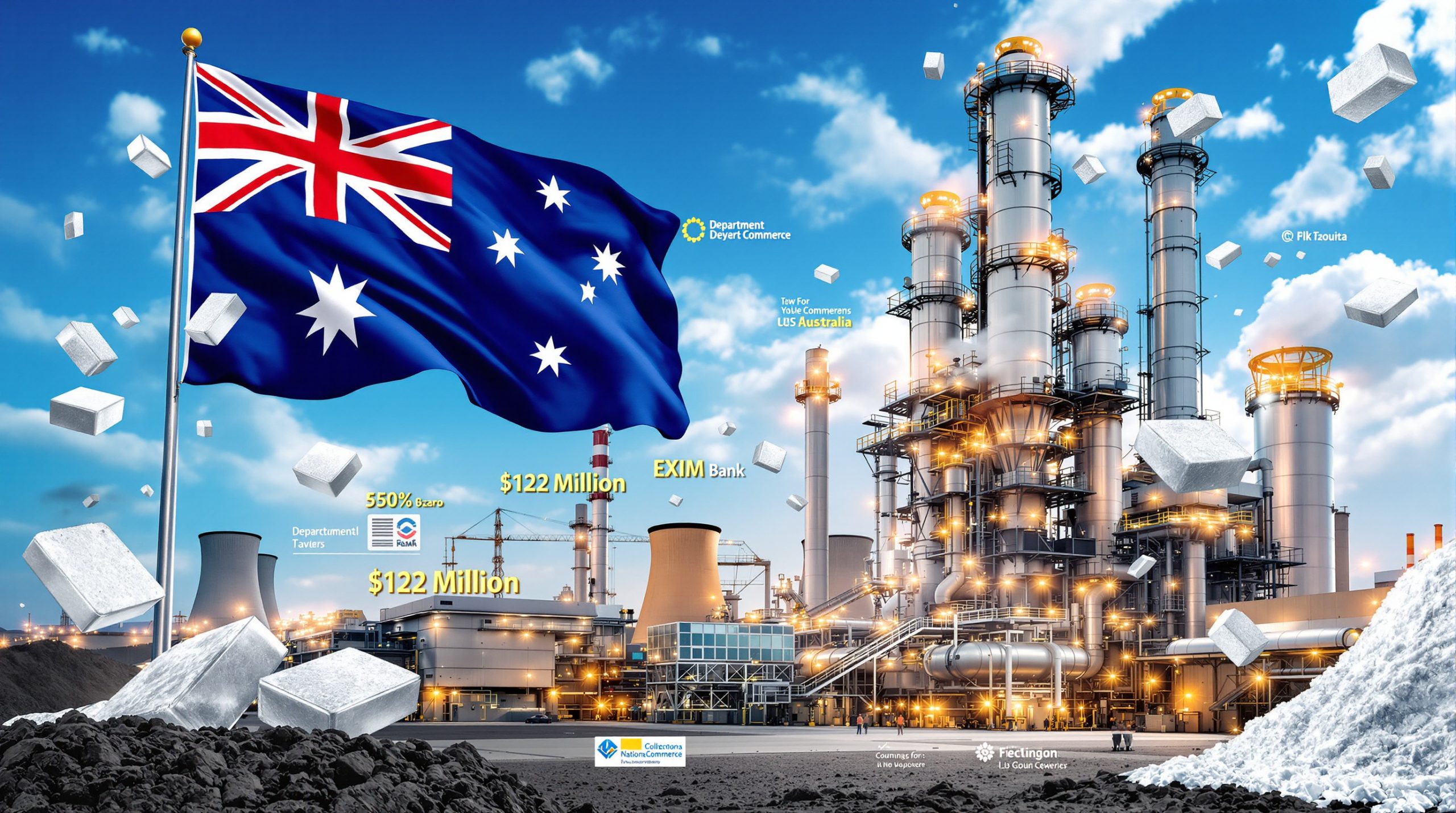What's Behind the Historic Drop in U.S. Fuel Costs?
American drivers are witnessing a remarkable transformation at gas stations nationwide as gasoline prices drop toward pandemic-era lows. The national average for gasoline has broken through the psychologically important $3 per gallon barrier, settling at $2.97 per gallon as of late October 2025. This represents a 16-cent decrease compared to the same period in 2024, marking the most significant sustained price relief since 2021.
The driving force behind this dramatic decline stems from fundamental shifts in global oil market influence dynamics. OPEC+ nations have systematically unwound production cuts throughout 2025, creating an oversupply environment that has pushed crude oil prices down substantially. West Texas Intermediate (WTI) crude has fallen to $58.06 per barrel, while Brent crude trades at $61.31 per barrel, representing declines of over $20 per barrel from their January 2025 peaks.
Beyond supply factors, several demand-side pressures are contributing to sustained price relief. The transition to cheaper winter-blend gasoline formulations, combined with economic uncertainties stemming from trade war effects, has reduced industrial fuel consumption. Additionally, continued improvements in vehicle fuel economy are decreasing per-capita gasoline demand across the United States.
Why Have Gas Prices Fallen Below $3 Per Gallon Nationwide?
The breakthrough below $3 per gallon represents more than a psychological milestone for consumers. Industry analysts describe this as creating the strongest potential for extended sub-$3 pricing since 2021, distinguishing the current environment from brief price dips experienced in 2024.
The median U.S. gas price has dropped even further, reaching $2.82 per gallon, indicating that a significant portion of the country enjoys prices well below the national average. However, regional disparities remain stark, creating vastly different experiences for drivers depending on their location. For those seeking more detailed insights, gasoline prices have reached levels that signal significant market shifts.
Regional Price Variations Create Substantial Disparities
Current Gas Price Ranges Across U.S. Regions:
| Price Tier | Representative States | Average Cost Range |
|---|---|---|
| Premium Markets | California, Hawaii, Washington | $4.40 – $4.62 |
| Moderate Markets | Northeast, Mid-Atlantic | $3.20 – $3.60 |
| Value Markets | Oklahoma, Texas, Gulf States | $2.56 – $2.80 |
California drivers face the highest costs at $4.624 per gallon, whilst Oklahoma motorists enjoy the lowest prices at $2.557 per gallon. This $2.067 price differential between states highlights how regional factors including refining capacity, transportation costs, state taxation policies, and fuel blend requirements continue to create dramatic variations in pump prices.
The substantial price gap between highest and lowest-cost states demonstrates how local infrastructure, regulatory requirements, and tax policies can override national market trends, creating distinct regional fuel economies within the United States.
What Market Forces Are Driving This Unprecedented Decline?
OPEC+ Production Strategy Transforms Global Supply
The primary catalyst behind falling gasoline prices stems from OPEC production impacts throughout 2025. This strategic shift has fundamentally altered global oil supply dynamics, moving markets from a supply-constrained environment to one characterised by abundance.
Crude Oil Price Trajectory Analysis:
- January 2025 Peak (WTI): $78.71 per barrel
- October 2025 Level (WTI): $58.06 per barrel
- Total Decline: $20.65 per barrel (26.3% decrease)
- Brent Crude Performance: Down approximately $20 from annual peaks
This substantial decline reflects not temporary market volatility but a fundamental rebalancing of global supply and demand relationships. Non-OPEC+ producers have also contributed to inventory buildups, creating additional downward pressure on prices.
Demand Patterns Signal Structural Market Changes
Multiple demand-side factors are reinforcing the supply-driven price decline:
- Seasonal Fuel Transitions: Winter-blend gasoline costs less to produce and refine
- Economic Headwinds: U.S.-China trade tensions reducing industrial fuel consumption
- Efficiency Improvements: Enhanced vehicle fuel economy decreasing per-capita usage
- Weather Patterns: Milder seasonal transitions affecting heating fuel demand
These converging factors create a market environment where abundant supply meets moderated demand, establishing conditions for sustained price relief.
How Do Current Prices Compare to Historical Pandemic Lows?
Understanding today's fuel prices requires contextualising them against previous market disruptions and recovery periods. Current pricing levels reflect unique market conditions that differ substantially from the demand collapse experienced during early 2020.
Historical Price Context:
| Time Period | Average National Price | Market Conditions |
|---|---|---|
| Pre-Pandemic (Early 2020) | $2.85/gallon | Stable supply-demand balance |
| Pandemic Low (April 2020) | $1.94/gallon | Demand collapse, lockdowns |
| Recovery Period (2021-2022) | $3.40-$4.20/gallon | Supply chain disruptions |
| Current Environment (October 2025) | $2.97/gallon | Oversupply, normalised demand |
The current pricing environment differs fundamentally from 2020's demand-driven collapse. Today's lower prices reflect abundant supply meeting stable, normalised demand patterns, creating a more sustainable foundation for extended price relief. This distinction suggests current low prices may prove more durable than the brief pandemic-era lows driven by extraordinary circumstances.
Market analysts emphasise that unlike 2020's temporary demand destruction, current price levels reflect structural market rebalancing that could support extended periods of consumer relief.
What Are Energy Analysts Predicting for Future Price Movements?
Wall Street Consensus Points to Continued Pressure
Leading financial institutions are projecting sustained downward pressure on oil and gasoline prices through 2026. Goldman Sachs forecasts an oil market oversupply of 1.9 million barrels per day by 2026, driven by OPEC+ production increases and rising output from the Americas.
Furthermore, the investment bank anticipates oil prices could fall into the $50-per-barrel range, which would translate to even lower gasoline prices for consumers. This bearish outlook reflects expectations that current oversupply conditions will persist and potentially intensify. For additional perspective on market dynamics, analysts point to Canadian oil producers' strategic shifts affecting North American supply patterns.
Key Wall Street Projections:
- Goldman Sachs: Oil prices falling to $50s territory by 2026
- Market Consensus: Sustained oversupply through next year
- Production Outlook: Continued increases from non-OPEC+ nations
- Demand Forecast: Modest growth insufficient to absorb surplus supply
Alternative Scenarios Suggest Potential Price Recovery
Standard Chartered presents a contrarian perspective, predicting oil price increases driven by several factors:
- U.S. Production Cuts: Low profitability forcing domestic producers to reduce output
- Economic Stimulus: Anticipated rate cuts and Chinese economic support measures
- Demand Recovery: Trade tension resolution potentially boosting industrial consumption
- Supply Constraints: Current U.S. production levels becoming unsustainable at prevailing prices
This alternative scenario suggests that whilst current low prices provide immediate consumer relief, market dynamics could shift relatively quickly if domestic production proves unprofitable or geopolitical factors disrupt supply chains.
How Are Different Regions Experiencing This Price Decline?
West Coast Markets Show Dramatic Improvements
Recent data indicates West Coast states experienced the most significant week-over-week price reductions in mid-October 2025. This dramatic improvement coincided with reduced refinery utilisation rates and improved supply logistics, demonstrating how regional infrastructure directly impacts local pricing.
California, despite maintaining the nation's highest prices at over $4.60 per gallon, has seen meaningful decreases that provide proportional relief to drivers in high-cost markets. The state's unique fuel blend requirements and environmental regulations continue to create price premiums, but improved supply conditions benefit all regional markets.
Midwest and Gulf Coast Leverage Infrastructure Advantages
States with direct access to major refining centres continue to enjoy the lowest prices, with some markets approaching $2.50 per gallon. This infrastructure advantage becomes more pronounced during periods of supply abundance, as transportation and distribution costs represent smaller proportions of total fuel costs.
Regional Pricing Hierarchy:
- Gulf Coast States: Direct refinery access, lowest transportation costs
- Midwest Markets: Pipeline connectivity, moderate distribution expenses
- Mountain West: Limited infrastructure, higher transportation premiums
- West Coast: Specialty fuel requirements, highest regulatory costs
These infrastructure-driven price differentials demonstrate how regional energy systems create distinct fuel economies within the national market, with some areas experiencing dramatically greater benefits from overall price declines.
What Economic Implications Does This Price Drop Create?
Enhanced Consumer Spending Power
Lower fuel costs translate directly into increased discretionary spending capacity for American households. When gasoline prices drop from $3.50 to under $3.00 per gallon, the average family saves approximately $200-300 monthly, based on typical household driving patterns and vehicle ownership.
This spending power enhancement ripples through the broader economy as consumers redirect fuel savings toward other purchases, potentially supporting retail sales, restaurant spending, and recreational activities.
Transportation Sector Experiences Widespread Benefits
Cost Reduction Impact Areas:
- Trucking Companies: Substantially reduced operating expenses for freight transport
- E-commerce Operations: Lower last-mile delivery costs improving profit margins
- Ride-sharing Services: Reduced driver costs potentially lowering consumer prices
- Public Transportation: Decreased operational expenses for bus and paratransit systems
Tourism and Travel Industry Revival
Lower fuel costs historically correlate with increased travel activity:
- Road Trip Activity: Enhanced affordability encouraging regional tourism
- Airline Operations: Reduced jet fuel costs improving carrier profitability
- Recreational Vehicles: Increased usage of motorhomes and travel trailers
- Tourism Destinations: Greater visitor traffic to drive-to locations
The correlation between fuel prices and travel behaviour suggests current price levels could support a significant expansion in domestic tourism and recreational travel activities.
Are There Risks Associated with Sustained Low Prices?
Domestic Energy Production Faces Pressure
Extended periods of low oil prices historically pressure domestic shale producers, potentially creating several concerning outcomes. The crude oil market update reveals how these conditions affect domestic operations:
- Reduced Drilling Activity: Uneconomical projects leading to decreased rig counts
- Workforce Reductions: Energy-producing regions experiencing employment declines
- Infrastructure Investment Delays: Postponed pipeline and facility upgrades
- Financial Stress: Increased bankruptcy risk for highly leveraged producers
Historical precedents from 2015-2016 and 2020 demonstrate how sustained low prices can rapidly transform energy-producing regions from boom to bust conditions, affecting local economies and employment.
Geopolitical Implications and Supply Security
Low prices may incentivise OPEC+ nations to implement renewed production cuts, potentially creating future price volatility as market dynamics shift. Additionally, reduced domestic production could increase import dependence, raising energy security concerns.
Potential Long-term Risks:
- Supply Chain Vulnerability: Increased reliance on foreign oil sources
- Market Volatility: Rapid price swings when supply conditions change
- Regional Economic Impact: Energy-dependent communities facing economic hardship
- Strategic Reserve Concerns: Reduced domestic production capability during emergencies
What Should Consumers Expect in the Coming Months?
Winter Driving Season Outlook Remains Favourable
The combination of winter-blend gasoline (cheaper to produce), reduced driving demand during colder months, and continued oversupply suggests prices may remain below $3 per gallon through early 2026 in many regions.
Winter-blend gasoline eliminates expensive additives required for summer formulations, providing additional downward pressure on retail prices. Historical patterns show winter typically brings price relief, and current supply abundance amplifies this seasonal effect. For comprehensive analysis of these trends, experts examine oil price crash insights affecting market projections.
Long-term Market Evolution Depends on Rebalancing
Industry analysts anticipate gradual rebalancing as market forces respond to current conditions:
Expected Market Adjustments:
- High-cost Producer Response: Reduced output from uneconomical operations
- Demand Pattern Stabilisation: Global consumption adjusting to new price levels
- Geopolitical Factor Integration: Supply decisions influenced by international relations
- Infrastructure Investment: Long-term capacity additions responding to market signals
Spring and Summer 2026 Price Forecasts
Whilst winter months appear likely to maintain favourable pricing, spring 2026 could bring renewed price pressure as:
- Refineries transition to expensive summer-blend formulations
- Driving season demand increases substantially
- Potential production cuts begin affecting supply levels
- Economic stimulus measures potentially boost industrial demand
Current market conditions create the strongest potential for extended sub-$3 pricing since 2021, but consumers should prepare for potential price increases as market dynamics evolve and seasonal demand patterns reassert themselves.
Disclaimer: Gasoline price forecasts involve significant uncertainty due to geopolitical events, weather patterns, economic conditions, and production decisions by major oil producers. Historical price patterns do not guarantee future performance, and consumers should budget for potential price volatility.
The unprecedented combination of OPEC+ production increases, adequate global supply, and seasonal factors has created optimal conditions for sustained fuel price relief. However, as gasoline prices drop toward pandemic-era lows, market dynamics remain subject to rapid change based on economic and geopolitical developments.
Ready to Capitalise on Energy Market Volatility?
With fuel markets experiencing such dramatic shifts, savvy investors are turning their attention to energy commodity discoveries that could benefit from these changing dynamics. Discovery Alert's proprietary Discovery IQ model delivers real-time alerts on significant ASX mineral discoveries, including critical energy transition metals, instantly empowering subscribers to identify actionable opportunities ahead of the broader market whilst understanding why historic discoveries can generate substantial returns.




